Ghalib's Shayari
aa, ki meree jaan ko qaraar naheeN hai
taaqat-e-bedaad-e-intazaar naheeN hai
dete haiN jannat hayaat-e-dahar ke badle
nashsha ba_andaaza-e-KHummaar naheeN hai
giriya nikaale hai teree bazm se mujh ko
haay ! ki roone pe iKHtiyaar naheeN hai
hamse 'abas hai gumaan-e-ranjish-e-KHaatir
KHaak meiN ushshaaq kee GHubaar naheeN hai
dil se uThaa lutf-e-jalva haay ma'anee
GHair-e-gul aainaa-e-bahaar naheeN hai
qatl ka mere kiya hai 'ahad to baare
waae ! akhar 'ahad ustuwaar naheeN hai
toone qasam mai_kashee kee khaaee hai 'GHalib'
teree qasam ka kuchch 'eitbaar naheeN hai !
aah ko chaahiye ik 'umr asar hone tak
kaun jeeta hai teree zulf ke sar hone tak ?
daam har mauj meiN hai halqa-e-sad_kaam-e-nahaNg
dekhaiN kya guzre hai qatre pe guhar hone tak
aashiqee sabr talab aur tamanna betaab
dil ka kya rang karooN KHoon-e-jigar hone tak ?
ham ne maana ke taGHaful na karoge, lekin
KHaak ho jaayeNge ham tumko KHabar hone tak
partav-e-khur se hai shabnam ko fana'a ki taaleem
maiN bhee hooN ik inaayat ki nazar hone tak
yak_nazar besh naheeN fursat-e-hastee GHaafil
garmi-e-bazm hai ik raqs-e-sharar hone tak
GHam-e-hastee ka 'Asad' kis'se ho juz marg ilaaz
shamma'a har rang meiN jaltee hai sahar hone tak
'arz-e-niyaaz-e-ishq ke qaabil naheeN raha
jis dil pe naaz tha mujhe wo dil naheeN raha
jaata hooN daaGH-e-hasarat-e-hastee liye hue
hooN shamma'a_kushta darKHur-e-mehfil naheeN raha
marne ki 'ei dil aur hee tadabeer kar ki maiN
shaayaan-e-dast-o-baazu-e-qaatil naheeN rahaa
bararoo-e-shash jihat dar-e-aaina_baaz hai
yaaN imtiaz-e-naakis-o-qaamil naheeN rahaa
waa kar diye haiN shauq ne band-e-naqaab-e-husn
GHair_az nigaah ab koee haayal naheeN raha
go maiN raha, rahee na sitam haaye rozgaar
lekin tere KHayaal se GHaafil naheeN raha
dil se hawa-e-kisht-e-wafa miT gayee ki waaN
haasil siwaay hasrat-e-haasil naheeN raha
bedaad-e-ishq se naheeN Darta magar 'Asad'
jis dil pe naaz tha mujhe wo dil naheeN raha
baazeechaa-e-atfaal hai duniya mere aage
hota hai shab-o-roz tamaasha mere aage
ik khel hai auraNg-e-sulemaaN mere nazdeek
ik baat hai 'eijaz-e-maseeha mere aage
juz naam naheeN soorat-e-aalam mujhe manzoor
juz waham naheeN hastee-e-ashiya mere aage
hota hai nihaaN gard meiN sehara mere hote
ghisata hai jabeeN KHaak pe dariya mere aage
mat pooch ke kya haal hai mera tere peeche ?
too dekh ke kya rang tera mere aage
sach kahte ho, KHudbeen-o-KHud_aaraa na kyoN hooN ?
baiTha hai but-e-aainaa_seemaa mere aage
fir dekhiye andaaz-e-gul_afshaani-e-guftaar
rakh de koee paimaanaa-o-sahba mere aage
nafrat ka gumaaN guzare hai, maiN rashk se guzaraa
kyoN kar kahooN, lo naam na uska mere aage
imaaN mujhe roke hai jo khiNche hai mujhe kufr
ka'aba mere peeche hai kaleesa mere aage
aashiq hooN, pe maashooq_farebee hai mera kaam
majnooN ko bura kehti hai laila mere aage
KHush hote haiN par wasl meiN yoN mar naheeN jaate
aayee shab-e-hijaraaN ki tamanna mere aage
hai mauj_zan ik qulzum-e-KHooN, kaash, yahee ho
aata hai abhee dekhiye kya-kya mere aage
go haath ko jumbish naheeN aaNhoN meiN to dam hai
rehne do abhee saaGHar-o-meena mere aage
ham_pesha-o-ham_masharb-o-ham_raaz hai mera
'GHalib' ko bura kyoN kaho achchaa mere aage !
be-'eitadaaliyoN se, subuk sab meiN ham huve
jitne ziyaada ho gaye, utne hee kam huve
pinhaaN thaa daam-e-saKHt qareeb aashiyaaN ke
uDne na paaye the; ki giraftaar hum huve
hastee hamaaree apnee fana'a par daleel hai
yaaN tak mite ki aap ham apnee qasam huve
saKHtee_kashaan-e-ishq kee poochche hai kya KHabar ?
woh lagaa rafta-rafta sar_aa_pa alam huve
teree wafa se kya ho talaafee, ki dahar meiN
tere siwa bhee ham pe bahut se sitam huve
likhte rahe junooN kee hikaayat-e-KHooNchakaaN
harchand usmaiN haath hamaare qalam huve
alla re teree tundee-e-KHooN, jiske beem se
azzaa-e-naala dil meiN mere rizke-ham huve
ahle hawas kee fatah hai, tark-e-nabard-e-ishq
jo paaNv uTha gaye wahee unke 'alam huve
naal-e-'adam meiN chand hamaare supurd the;
jo waaN na kheeNch sake so woh yaaN aake dam huve
choDee 'Asad' na hamne gadaaee meiN dil_lagee
saail huve to aashiq-e-ahl-e-karam huve
bus ki dushwaar hai har kaam ka aasaaN hona
aadmee ko bhee muyassar naheeN insaaN hona
giriya chaahe hai KHaraabee mere kaashaane ki
dar-o-deevaar se Tapke hai bayaabaaN hona
waa-e-deewaangee-e-shauq, ke har dam mujhko
aap jaana udhar aur aap hee hairaaN hona
jalva az_bas ki taqaaza-e-nigah karta hai
jauhar-e-aaina bhee chaahe hai mizhgaaN hona
ishrat-e-qatl_gah-e-'ehl-e-tamanna mat pooch
id-e-nazzaara hai shamsheer ka uriyaaN hona
le gaye KHaak meiN ham daaGH-e-tamanna-e-nishaat
too ho aur aap ba_sad_rang-e-gulistaaN hona
ishrat-e-paara-e-dil, zaKHm-e-tamanna_KHaana
lazzat-e-reesh-e-jigar GHarq-e-namakdaaN hona
kee mere qatl ke baad usne jafa se tauba
haay us zood_pashemaaN ka pashemaaN hona
haif us chaar girah kapDe ki qismat 'GHalib'
jis ki qismat meiN ho aashiq ka girebaaN hona
daayam paDa huaa tere dar par naheeN hooN maiN
KHaak 'eisee zindagee pe ke patthar naheeN hooN maiN
kyooN gardish-e-mudaam se ghabra na jaaye dil ?
insaan hooN, pyaala-o-saaGHar naheeN hooN maiN
yaarab ! zamaana mujhko miTaata hai kis liye ?
loh-e-jahaaN pe harf-e-muqarrar naheeN hooN maiN
had chaahiye saza meiN uqoobat ke waaste
aaKHir gunaahagaar hooN, kaafir naheeN hooN maiN
kis waaste 'azeez naheeN jaante mujhe ?
laal-o-zumarrud-o-zar-o-gauhar naheeN hooN maiN
rakhte ho tum qadam meree aaNkhoN se kya dareGH
rutbe meiN mehar-o-maah se kamtar naheeN hooN maiN
karte ho mujhko man'a-e-qadam_bos kis liye ?
kya aasmaan ke bhee baraabar naheeN hooN maiN ?
'GHalib' wazifaa_KHwaar ho, do shaah ko duaa
woh din gaye ki kehte the;, "naukar naheeN hooN maiN"
dard minnat_kash-e-dawa na huaa
maiN na achchaa huaa, bura na huaa
jama'a karate ho kyoN raqeeboN ka ?
ik tamaasha huaa gila na huaa
ham kahaaN qismat aazmaane jaayaiN ?
too hee jab KHanjar aazma na huaa
kitne sheereeN haiN tere lab ! ki raqeeb
gaaliyaaN khaake be_maza na huaa
hai KHabar garm unke aane kee
aaj hee ghar meiN boriya na huaa !
kya woh namrood kee KHudaaee thee
bandagee meiN tera bhala na huaa
jaan dee, dee huee usee ki thee
haq to ye hai ke haq adaa na huaa
zaKHm gar dab gaya, lahoo na thama
kaam gar ruk gaya rawa na huaa
rahzanee hai ki dil_sitaanee hai ?
leke dil, dil_sitaaN rawa na huaa
kuchch to paDhiye ki log kehte haiN
"aaj 'GHalib' GHazalsara na huaa"
dekhna qismat ki aap apne pe rashk aajaaye hai
maiN use; dekhooN, bhalaa kab mujhse dekha jaaye hai
haath dho dil se yahee garmee gar andeshe meiN hai
aabgeena tundee-e-sahbaa se pighla jaaye hai
GHair ko yaarab ! woh kyoNkar mana'a-e-gustaaKHee kare ?
gar haya bhee usko aatee hai to sharma jaaye hai
shauq ko ye lat ke hardam naala KheeNche jaayiye
dil ki woh haalat ki dam lene se ghabra jaaye hai
door chashm-e-bad ! teree bazm-e-tarab se waah-waah
naGHma ho jaata hai waaN gar naala mera jaaye hai
GHarche hai tarz-e-taGHaaful, pardaadaar-e-raaz-e-ishq
par ham 'eise khoye jaate haiN ki woh paa jaaye hai
uskee bazm_aaraaiyaaN sunkar dil-e-raNjoor yaaN
misl-e-naqsh-e-muddaa-e-GHair baiTHa jaaye hai
hoke aashiq woh paree_ruKH aur naazuk ban gaya
rang khulta jaaye hai, jitna ki uData jaaye hai
naqsh ko uske musawwir par bhee kya-kya naaz hai
kheeNchta hai jis qadar, utana hee khiNchta jaaye hai
saaya meraa mujhse misl-e-dood bhaage hai 'Asad'
paas mujh aatish_bazaaN ke kisse Thahra jaaye hai
dhota hooN jab maiN peene ko us seem_tan ke paaNv
rakhata hai zid se kheeNch ke baahar lagan ke paaNv
dee saadgee se jaan paDooN kohakan ke paaNv
haihaat ! kyoN na TooT gaye peerzan ke paaNv
bhaage the; ham bahut see uskee saza hai ye
hokar aseer daabte haiN raahzan ke paaNv
marham ki justjoo meiN ghira hooN jo door-door
tan se siwa figaar hai is KHastaa_tan ke paaNv
allaah re zauq-e-dasht-e-nawrdee ki baad-e-marg
hilte haiN Khud-ba-KHud mere andar qafan ke paaNv
hai josh-e-gul bahaar meiN yaaN tak ki har taraf
uDate hue ulajhte haiN murGH-e-chaman ke paaNv
shab ko kisee ke KHwaab meiN aaya na ho kaheeN
dukhte haiN aaj oos but-e-naazuk_badan ke paaNv
'GHalib' mere kalaam meiN kyoNkar maza na ho ?
peeta hooN dhoke KHusrau-e-sheereeN_suKHan ke paaNv

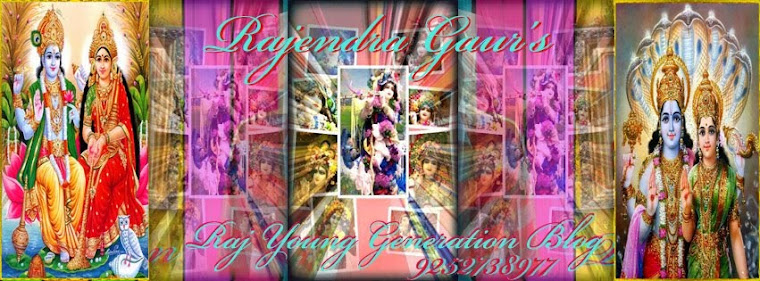






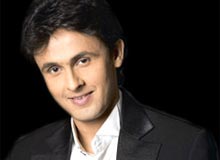 Sonu Nigam is one of the most popular singers of Bollywood. He is a teen idol who has inspired thousands of young singers across the country. This talented singer was born in Faridabad district of Haryana on July 30th, 1973. He did his schooling from J.D. Tytler School in Delhi. Thereafter he moved to Bombay to pursue his dream of making a career in music. Given here is a short biography of Sonu Nigam.
Sonu Nigam is one of the most popular singers of Bollywood. He is a teen idol who has inspired thousands of young singers across the country. This talented singer was born in Faridabad district of Haryana on July 30th, 1973. He did his schooling from J.D. Tytler School in Delhi. Thereafter he moved to Bombay to pursue his dream of making a career in music. Given here is a short biography of Sonu Nigam.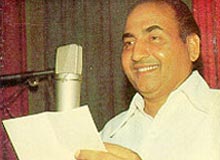 One of the greatest playback singers of India, Mohammed Rafi is considered no less than a genius when it comes to varied styles of music. Born on December 24th, 1924, this great soul had the perfect blend of melody, emotions and energy, which reflected greatly in his songs. Be it the classically inclined songs of Baiju Bawara or the foot tapping songs of Kashmir Ki Kali, Muhammad Rafi gave each song the treatment it deserved. His contribution to the Hindi film industry has been fabulous and perhaps no singer till date has managed to capture the hearts of fans the way Mohamed Rafi has. We capture the fascinating life history of Rafi in this short biography of Mohd. Rafi.
One of the greatest playback singers of India, Mohammed Rafi is considered no less than a genius when it comes to varied styles of music. Born on December 24th, 1924, this great soul had the perfect blend of melody, emotions and energy, which reflected greatly in his songs. Be it the classically inclined songs of Baiju Bawara or the foot tapping songs of Kashmir Ki Kali, Muhammad Rafi gave each song the treatment it deserved. His contribution to the Hindi film industry has been fabulous and perhaps no singer till date has managed to capture the hearts of fans the way Mohamed Rafi has. We capture the fascinating life history of Rafi in this short biography of Mohd. Rafi.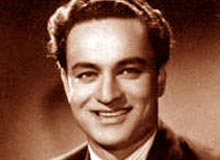 Mukesh was nicknamed as The Man with the Golden Voice and his songs are true examples of his inimitable voice. Mukesh was born as Zoraver Chand Mathur in Delhi on July 22nd, 1923. His name is mentioned with the names of great legends like Mohammed Rafi and Kishore Kumar. Mukesh left studies after the 10th standard and got a job with Delhi Department of Public Works. He experimented with voice recordings and at the same time, honed his singing ability. A short biography covering the life history of Mukesh has been given below.
Mukesh was nicknamed as The Man with the Golden Voice and his songs are true examples of his inimitable voice. Mukesh was born as Zoraver Chand Mathur in Delhi on July 22nd, 1923. His name is mentioned with the names of great legends like Mohammed Rafi and Kishore Kumar. Mukesh left studies after the 10th standard and got a job with Delhi Department of Public Works. He experimented with voice recordings and at the same time, honed his singing ability. A short biography covering the life history of Mukesh has been given below.
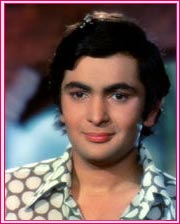







 CHAMPIONS
CHAMPIONS
 INDIA
INDIA



